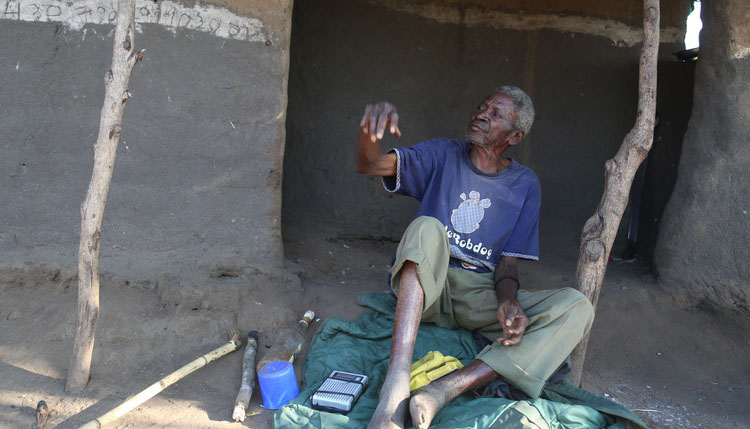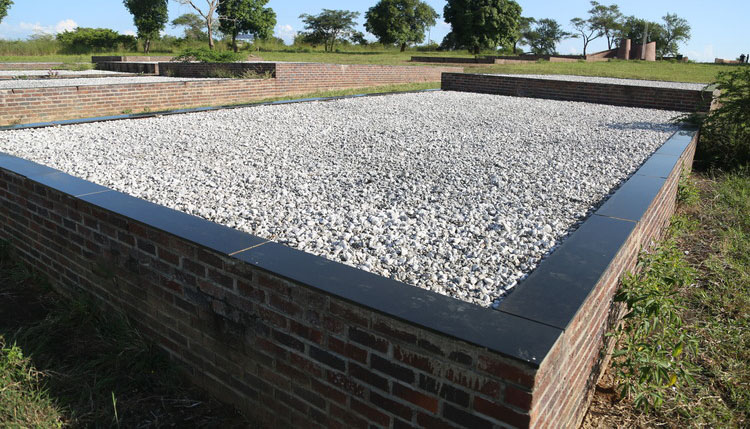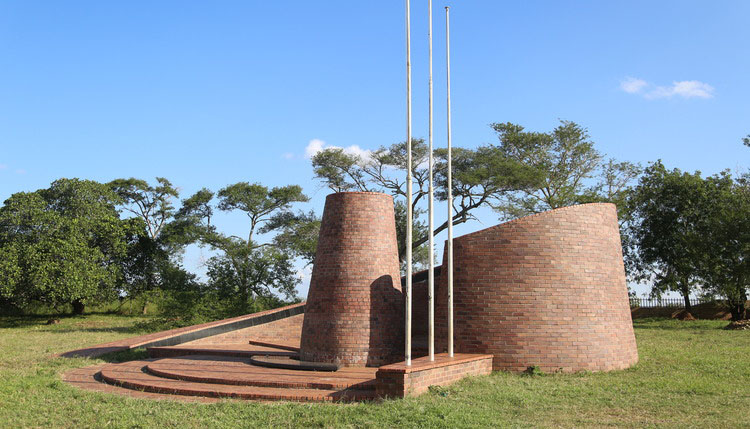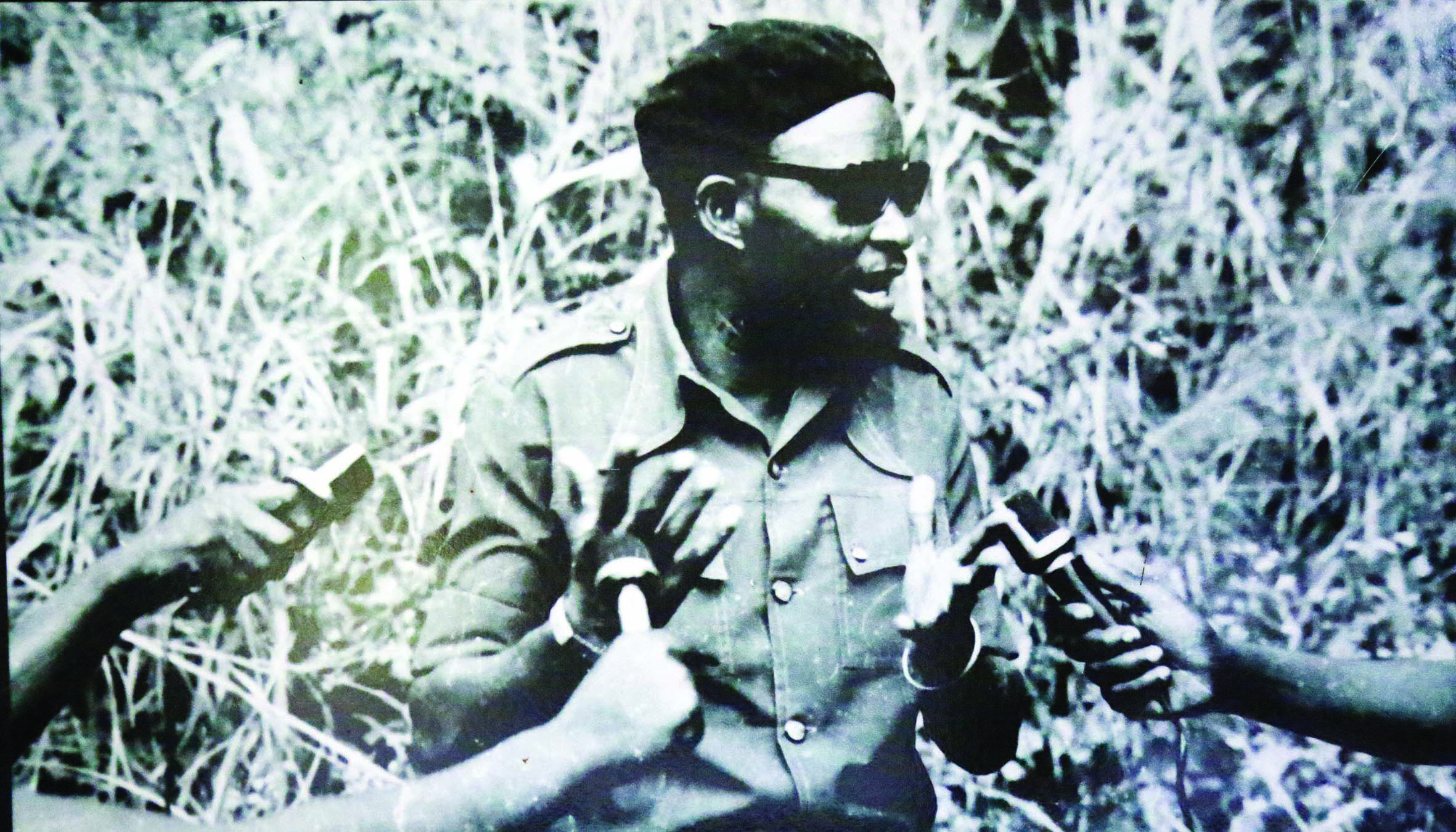
The Sunday Mail

We find Fernando Kandiyado (76) basking in the sun, his favourite local brew by his side, and an FM transmitter nearby.
With his homestead a stone’s throw from the Chimoio Shrine, and his son a caretaker at the monument, we seek to get his recollection of the November 1977 massacre.
After engaging him for almost an hour, through halting Shona, it dawns on us that he is a repository of Chimoio’s history as he saw all that happened in 1977.
The clarity of his memory, how he remembers the three days of bombardment, defies his age and the years that have transpired since then.
November 23, 1977 was a Wednesday. He recalls it like it was yesterday as he and fellow villagers had an up close dose of what the racist Rhodesian military could do.
“The attack started around six in the morning and lasted until six in the evening,” he recounts as he shifts his position to get the most of the fading sunlight. “And this was to continue for the next day and the day after. For three days, (Southern Rhodesia Prime Minister Ian) Smith bombed the comrades.”
The villagers stayed clear of Adriano’s Farm (the Chimoio Camp’s original name) from Wednesday through to Sunday, only daring to venture to render assistance on the Monday when they were certain the attack was over.
Help was also coming from Chimoio town, about 30km away. Huge earth movers arrived to dig mass graves.
“Up to now it is not easy to forget the scenes that greeted us that Monday morning when we started to look for survivors, getting the injured to hospital and burying the dead. Some of them we buried where we found them, it was pointless moving them into a mass grave.
“Those are memories that cannot be erased by any lifetime. That attack was callous. As much as the air attack was cruel, the cruelty of the attack was worsened by a ground force that was ruthless in that they killed those who would have been missed by the aeroplanes,” says Kandiyado.
Kandiyado says they spent four days looking for the dead in the forest, as some people were killed as they sought refuge in hillocks.
Kandiyado has lived near this reminder of the price of Zimbabwe’s freedom for decades.
After 1992, when Mozambique’s civil war ended, Kandiyado moved his homestead even closer to the site of the massacre.
“The soils here are more fertile than where we used to stay. Remember this area was Adriano’s Farm, so the area has good soils,” he explains.
Adriano was a Portuguese farmer who abandoned his farm when Mozambique gained independence in 1975. The Frelimo government gave the farm to Zanu-PF to use as a training, transit and refugee camp.
It is from his homestead less than a kilometre away that Kandiyado has watched as Zimbabwe’s Government has built the Chimoio Shrine.
“When the Government of Zimbabwe started building the shrine in 1998, all the building material was left here for safe-keeping. Even now that they are working on the museum, my home has kept some of the material safely,” adds Kandiyado.
He has also helped with reburial of victims.
“When the re-burial process began, I was part of the team that helped to identify where we had buried comrades. That process was, once again, harrowing as it brought back memories of the massacre.”
And he has seen some really strange things: some of the dead were in fatigues that appeared new despite having been initially buried in 1977.
“Some of them even had working watches on their wrists,” he says with no small wonder in his eyes and voice.
One of Kandiyado’s sons, Francisco, is a care-taker at the shrine. Francisco Fernando and Augusto Maritimo take turns to look after the memorial.
“Chimoio is as mystical as it has always been,” Francisco picks up the story. “From time to time we give stranded pedestrians a place to sleep overnight,” and they are left in an equal mix of shock and awe at what they experience here.
Several times in February this year, people who use a path near the shrine just after sunset reported coming across “people singing whilst dressed in white”.
“When we went back with the (people) … to check what would be taking place, we found the place as quiet as ever.”
Last year, a woman bought farm land near shrine. “She found an unused bed resting on one of the trees in her plot. Her first mistake was to take that bed and use it. Then later on, as she prepared her plot for farming, she cut down the tree on which the bed (had been) resting. Mistake number two.
“She had to leave her plot as she was having sleepless nights. A comrade would appear in her sleep and ask her why she took her bed as well as cut his resting place. And she has vowed not to come back here,” narrates Francisco.
As Zimbabwe celebrates its Independence this month, the role of those who lost their lives in sacrifice for a better Zimbabwe should not be lost, especially as this year’s celebrations come against a background of a defining election.








